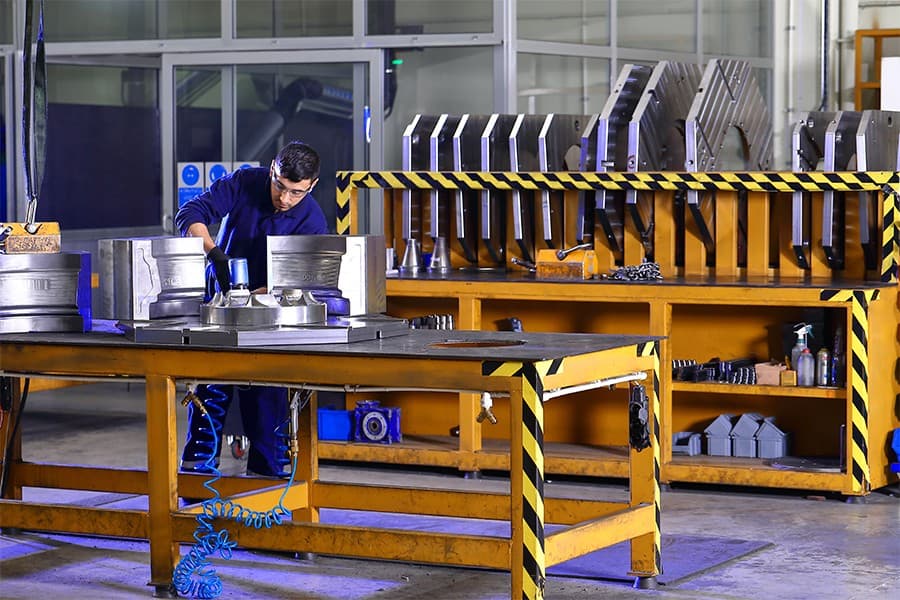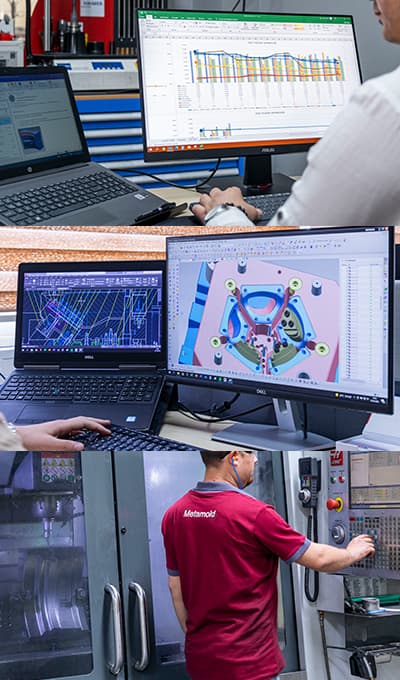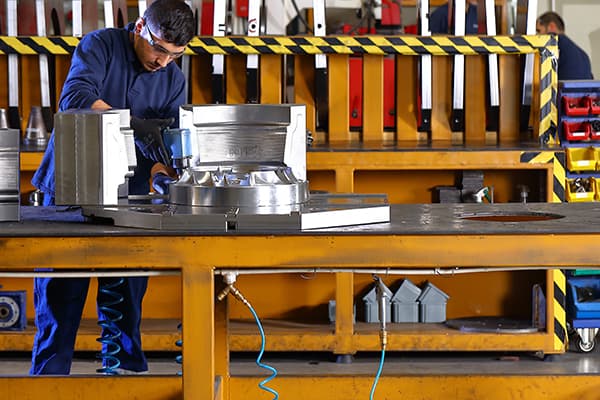- +90 236 233 20 03
- info@metamold.com
- Customer Portal

Aluminum injection molds are one of the most important steps in production processes. At Metamold, we aim to be a leader in the production of high-quality aluminum injection molds. Each of our molds used in production is meticulously designed and manufactured with advanced technology and the experience of our expert team to maximize customer satisfaction. Our aluminum injection molds, which offer high durability, precision, and performance-oriented solutions, find wide application in various sectors such as automotive, white goods, and electrical-electronics. Thanks to certified materials and continuous R&D investments, our aluminum injection molds provide durability, efficiency, and cost advantages.
An aluminum injection mold is a mold used to produce parts by injecting aluminum alloys in liquid form under high pressure. These molds enable the rapid and efficient production of metal parts in complex shapes for automotive, electronics, aerospace, and industrial applications.
Features:
Advantages:

Advantages:
Disadvantages:
Part Design: Simple geometry should be preferred; using simple geometries instead of complex forms is more advantageous. Low weight provides a significant advantage in the injection process. Mold Structure: The mold material should be resistant to wear and heat (generally, steel or aluminum alloys are preferred), and modular design should allow for easy replacement of parts. Cooling System: An effective cooling system should be integrated for rapid cooling and solidification. Injection Points should be carefully placed to ensure proper distribution of liquid aluminum. Air Escapes: Ventilation paths should be present to prevent the formation of air bubbles. Pressing and Mold Opening Mechanism: Should be designed with suitable angles and mechanisms for easy part removal. Material Selection: The properties of the aluminum alloy should meet application requirements. Cost-Effectiveness: The design should minimize costs. Finally, during the Testing and Prototyping phase, mold behavior should be analyzed, and prototype production should be carried out if necessary.
Maintenance Processes
Maintenance processes are critical for the efficient and long-lasting use of molds. First, mold surfaces should be regularly cleaned; residues formed during injection should be carefully removed. Additionally, proper lubrication should be performed to ensure the smooth operation of moving parts. Wear signs on mold surfaces should be regularly checked, and necessary interventions should be made. To ensure the effective operation of the cooling system, cooling channels should be inspected for blockages, and adequate cooling should be provided. Finally, worn or damaged parts should be replaced promptly. These maintenance processes enhance mold performance and support the efficiency of the production process.


Repair Processes
Repair processes are essential for ensuring molds operate correctly. First, cracks and deformations should be checked regularly; repairs should be made immediately when damage is detected. Small cracks can be effectively repaired using appropriate welding methods. Additionally, worn surfaces can be corrected through grinding or other refurbishment methods. After completing the repair processes, the mold should be tested for performance. Alongside all these processes, it is important to create a systematic plan for maintenance and repair; this way, mold performance can be continuously monitored, and interventions can be made as needed.
Automotive Industry: Engine parts, chassis components, and interior accessories.
Electronics and Electrical Devices: Phone casings and computer components.
Aerospace: Aircraft fuselage components and engine parts.
Construction and Building: Window frames and doors.
Consumer Products: Kitchen appliances and sports equipment.
Medical Devices: Medical equipment and prosthetic parts.
Defense Industry: Military vehicles and equipment.
Machinery and Equipment: Industrial machines and automation system components.
Energy Sector: Renewable energy systems and solar panels.
What is an aluminum injection mold?
Aluminum injection molds are molds used for shaping aluminum alloy by injecting it under high pressure. This method allows for the production of parts with precise tolerances and complex geometric shapes.
In which industries are aluminum injection molds used?
These molds are widely used in sectors such as automotive, aerospace, electronics, lighting, white goods, and construction. Aluminum injection is ideal for producing durable and lightweight parts.
What are the advantages of aluminum injection molds?
High precision: Allows for the production of complex and detailed parts. High efficiency: Provides rapid production with short cycle times. Low cost: Offers economical solutions for mass production. Reduced material waste: Enables environmentally friendly production with recyclable aluminum.
What materials are used in the production of aluminum injection molds?
Typically, steel or other durable metals are used in mold production. The molds are designed to withstand high temperatures and pressure.
How is the maintenance of aluminum injection molds done?
Regular maintenance is important for the longevity of molds. The maintenance process involves cleaning, lubrication, and replacement of worn parts. Periodic inspections should also be carried out based on the frequency of use.
What part sizes can be produced with aluminum injection molds?
Aluminum injection molds typically produce small to medium-sized parts. However, depending on the design of the mold, larger parts can also be produced.
How long does the production process of aluminum injection molds take?
The time for mold production varies depending on design, complexity, and technologies used. However, mold production generally takes between 4 to 12 weeks.
How durable are aluminum injection molds?
Depending on the mold material and usage conditions, an injection mold can be used to produce thousands or even millions of parts. Regular maintenance and proper usage extend the life of the mold.
What is the cost of aluminum injection molds?
The cost of a mold varies based on its size, complexity, and the materials used. Molds made from high-quality and durable materials may be more expensive, but they offer a more economical solution in the long term.
Why are aluminum injection molds preferred?
These molds provide the advantage of reducing per-part costs in high-volume production. Additionally, aluminum is a lightweight and durable material, making it preferred in many industries.